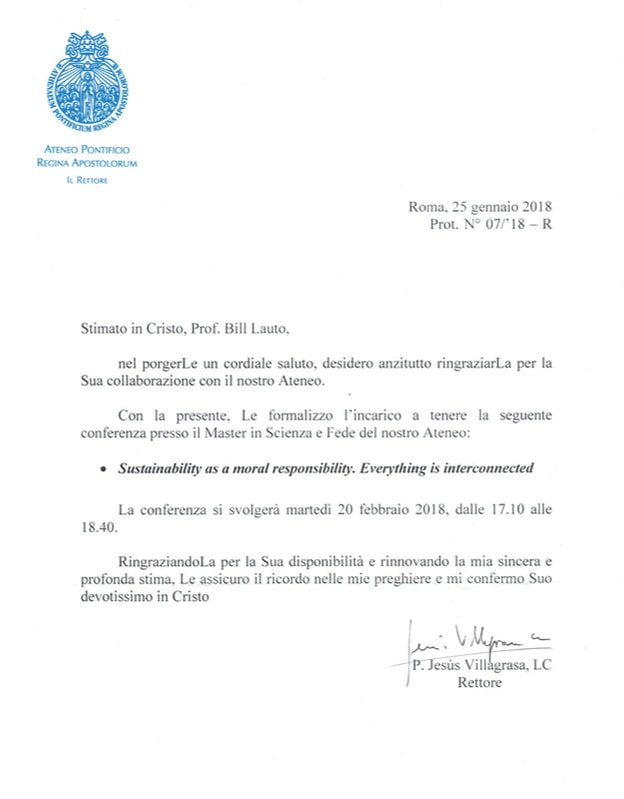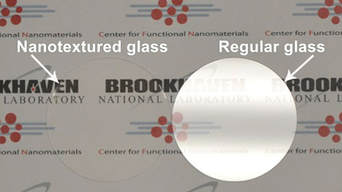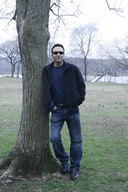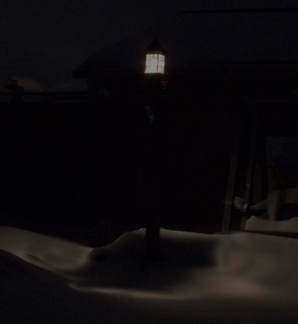 Underperforming Fluorescent Bulb Underperforming Fluorescent Bulb Many parts of the United States are experiencing some serious cold winter weather this season and I received a few emails asking about outside lights. Many Going True Green readers and members have compact fluorescent bulbs in outside fixtures. Depending on where we live, most compact fluorescent bulbs have not caused any issues until this season's long cold snap and a bomb cyclone winter storm that hit the Northeast. Below are some of the questions and my answers: - How come my outdoor Compact Fluorescent Bulbs are so dim over my front door? - Why are my fluorescent light bulbs outside only half as bright as normal? - My energy saving fluorescent bulbs outside are hardly coming on since our 7 degree temperatures? - Will LEDs do better in cold temperatures? - Should I switch back to regular light bulbs for outside? Most Compact Fluorescent bulbs have a lower lumen (light level) output below 32 degrees Fahrenheit. Then light levels drop off "Big Time" below 20 something degrees Fahrenheit as shown in the image. Any temp lower than that, most of these bulbs don't even come on! They may just glow a little, but no significant light level is provided. Additionally, these lights will still cost us the full wattage of the bulb in electricity even though we are not receiving the proper light level. In other words, that outdoor 20 watt compact fluorescent bulb (able to give off a light level equal to 75 watts) is still costing 20 watts in electric power, but only giving off about 3 watts of light when outside temperatures are severely cold. Another negative factor is the bulb's life will be cut short as the components struggle repeatedly to work properly in temperatures dropping toward zero degrees.
Don't even think about switching back to regular incandescent bulbs for outside. They too will burn out faster because of the heat they produce vs the cold outside air. Did you know that with the energy used by a regular light bulb, 90% produces heat and only 10% omits light? Also switching will just run up your electric bill, because now you will have a 75 watt bulb in place of the 20 watt compact fluorescent. As for LED light bulbs, they will get brighter in colder temps! Additionally you will be only using a 14 watt LED (current technology, LEDs are getting more efficient) to give off 75 watts of light. So to make the long dark winter nights a little brighter, start to change over to new LED bulbs. We will all save a little more on the electric bill, some energy for tomorrow, and have a brighter front doorway. Bill Lauto, at GoingTrueGreen.com Environmental Scientist International Sustainability and Energy Consultant Contribute your comments! 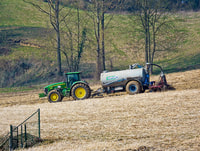 Slurry on Farmland? Slurry on Farmland? A very important question came from a reader on my last blog of 2017 titled: Plastic, Water, Air and Food, posted on December 27 of that year. I have written several blogs over the years on plastic and how we are creating a plastic monster in our world. However, we now have data supporting the fact that we have created a serious issue. The question posted from one of Going True Green’s reader was for more data on an unanswered question that I had posed in my blog post: By what means are these microplastic fibers getting into the air? My reply was: As of now scientists are speculating how plastic gets into the air. One possible source comes from Professor Kelly who I spoke about in my previous blog and believes that any microplastics caught in sewage treatment plants could be finding their way into the air. He also reportedly stated: “When farmers spread slurry on fields, it dries out. You end up having microplastics lying on the surface of the field. There’s a real possibility that some of those microparticles will be entrained into the air and they will be carried around and we will end up breathing them.” Professor Kelly said the study they were carrying out was a “horizon-scanning issue”. Horizon-scanning studies cover several global issues and is now concluding the eight year of work. I trust, more detail conclusions should be coming forthwith. As for any questions on my Going True Green blog post, do not hesitate to reply on the Blog page or email me from the GTG’s website. Bill Lauto, at GoingTrueGreen.com Environmental Scientist International Sustainability and Energy Consultant Contribute your comments! Even though we can see through glass, glass is not invisible. Until 2017 when scientists at Brookhaven Lab’s Center for Functional Nanomaterials almost eliminated all surface reflections on their textured glass surface containing features that measure billionths of a meter. This ultra-transparent nano-textured glass is antireflective over a large range of wavelengths that include the visible and near-infrared spectrum, along with viewing angles. The glass is virtually invisible because the reflections are reduced to almost non-existent. With this discovery we should see many benefits such as:
However, one immediate drawback that comes to mind is with those sliding glass doors. Visual stickers on the glass will now need to be mandatory. Bill Lauto, at GoingTrueGreen.com Environmental Scientist International Sustainability and Energy Consultant Contribute your comments! TELOMERE, by L. J. Williams "Telling The Untold Stories™ BBV Publishing
|
Follow GTG BlogPlease us SEARCH box at very top of page to find specific topics of interest or our Categories below. Also please consider becoming a GTG MEMBER. Thank you.
Honors, Going True Green's Blog received, are below:
Categories
All
Author:
|

